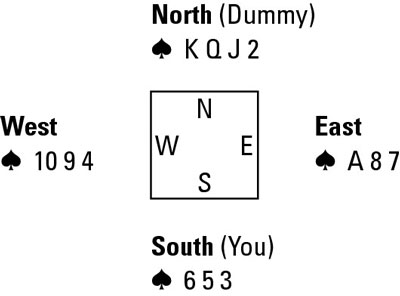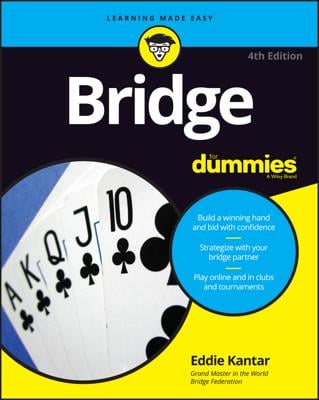When you play bridge, sometimes you have to drive out an opponent’s high honor card (could be an ace, a king, or a queen) before you can turn your frogs into princes (or turn your deuces into tricks). This example hand shows you how (with a little luck) you can turn a deuce into a winner during a hand of bridge.

With the cards shown in the example, your plan is to develop (or establish) as many spade tricks as possible, keeping a wary eye on turning that ♠2 in the dummy into a winner:
You begin by leading a low spade, the ♠3, and West follows with a low spade, the ♠4.
You play the ♠J from the dummy, which loses to East’s ♠A. At this point, you note the following:
The ♠KQ in the dummy are now both winning tricks because your opponents’ ♠A is gone.
Your opponents started with six spades. So, you can calculate that your opponents now have only four spades left. Four is your new key number.
After regaining the lead by winning a trick in another suit, lead another low spade, the ♠5, to the ♠Q in the dummy (with both opponents following suit).
Your opponents now have two spades left between them.
Continue with the ♠K to force both opponents to follow suit again.
They now have zero spades left — triumph! The ♠2 in the dummy is now a sure trick. Deuces love to take tricks — doing so makes them feel wanted.
Make sure that you count the cards in the suit you’re attacking. You’re in a pretty sad state if you don’t know (or aren’t sure) whether a low card in your hand or in the dummy can be a winner, and you leave it untouched because it’s such a small card.

